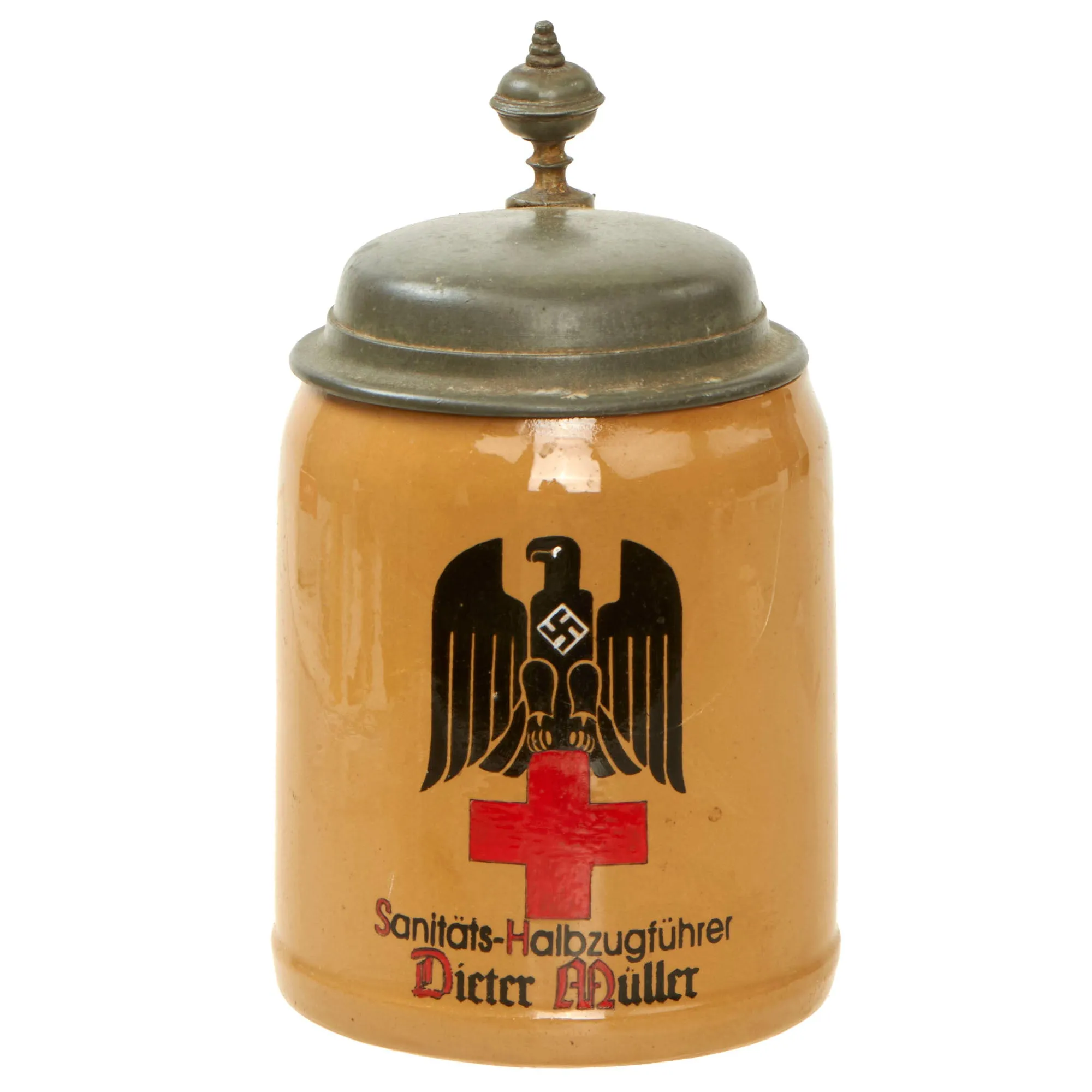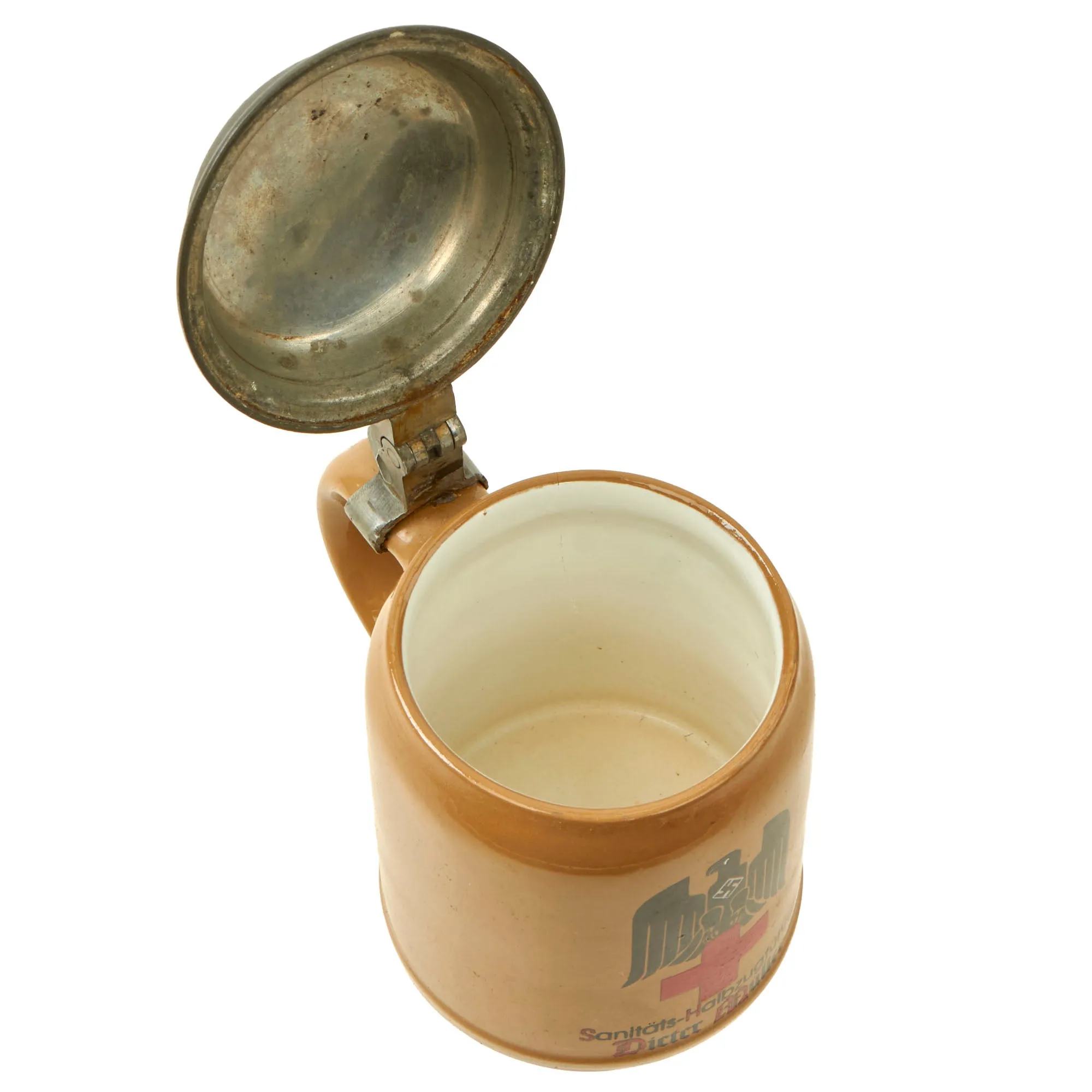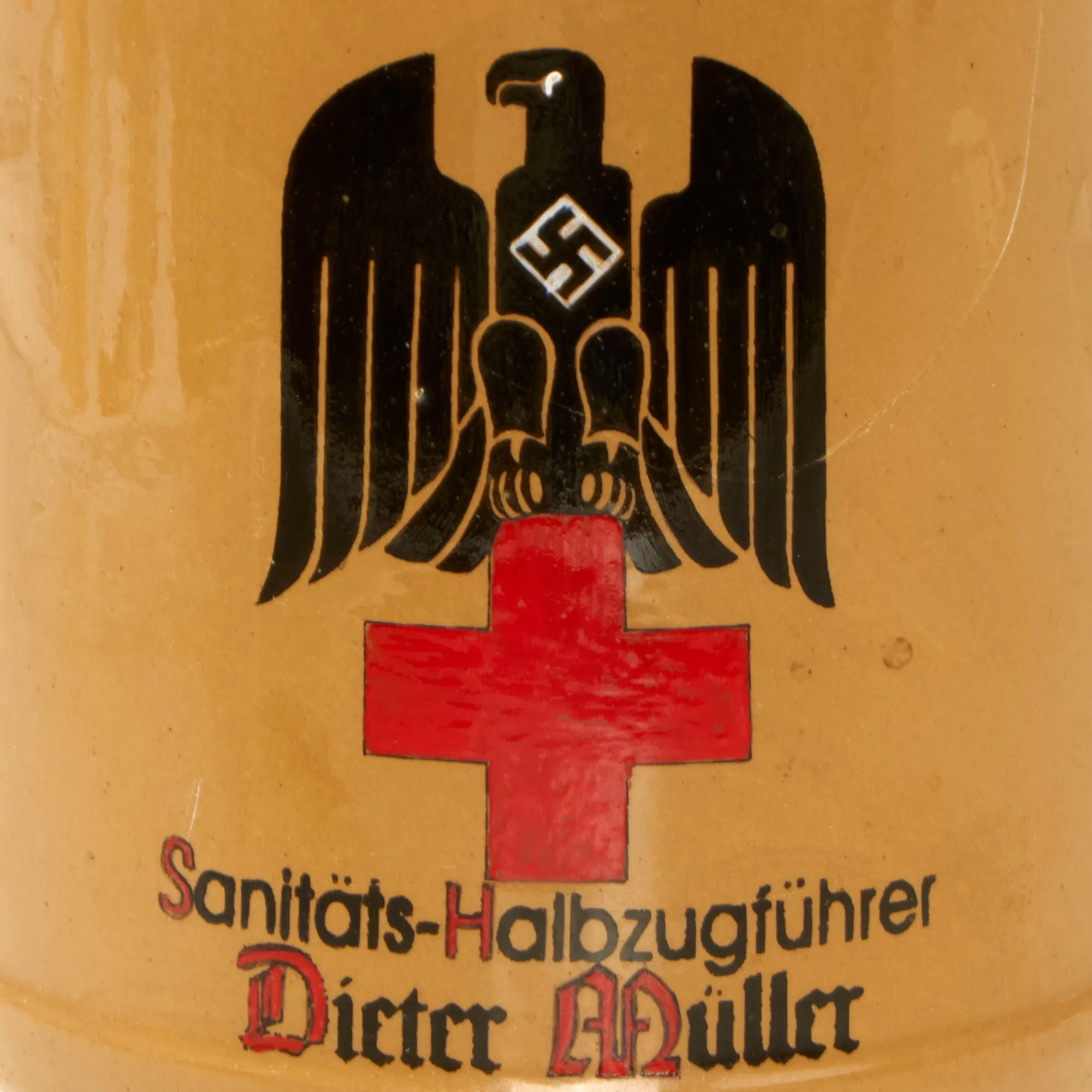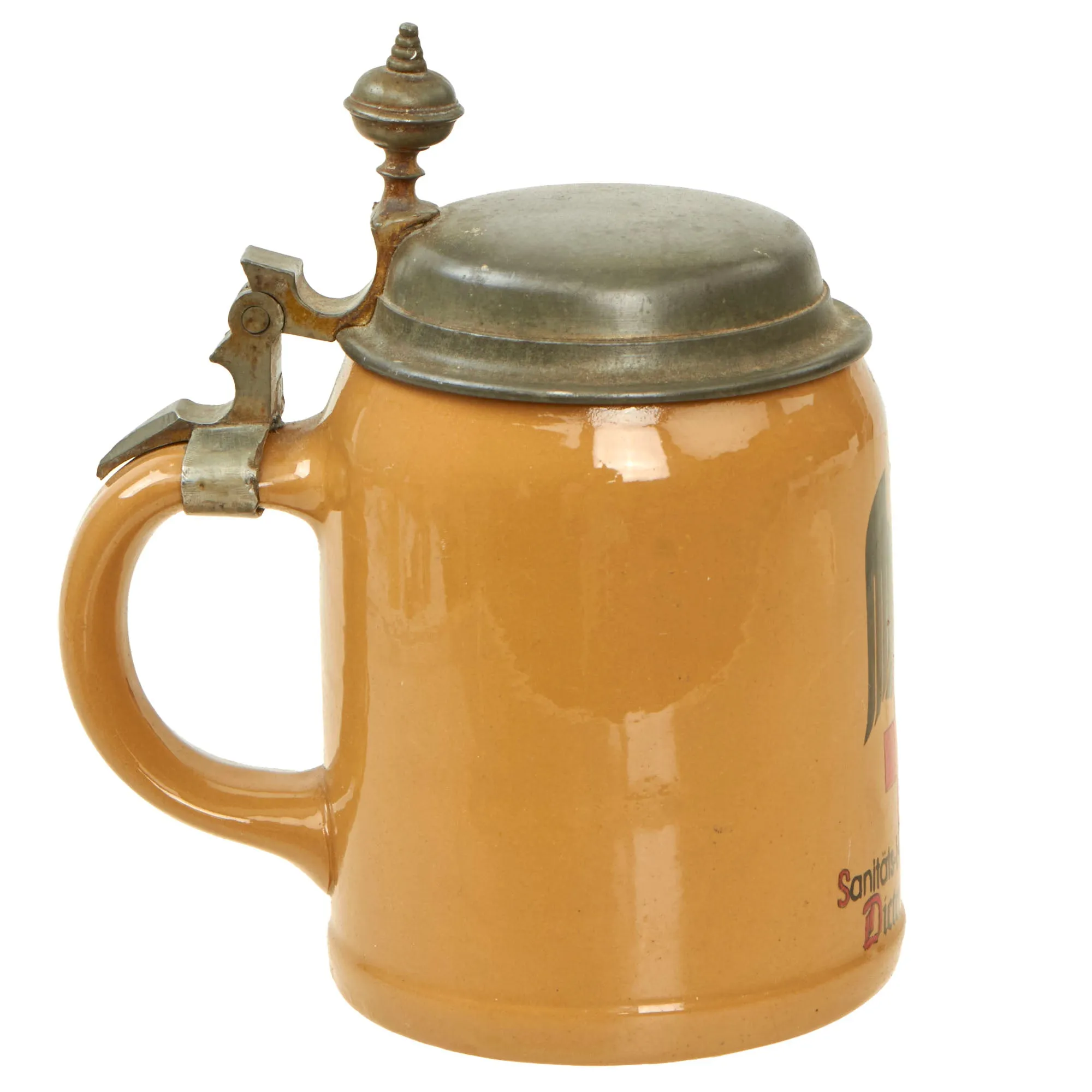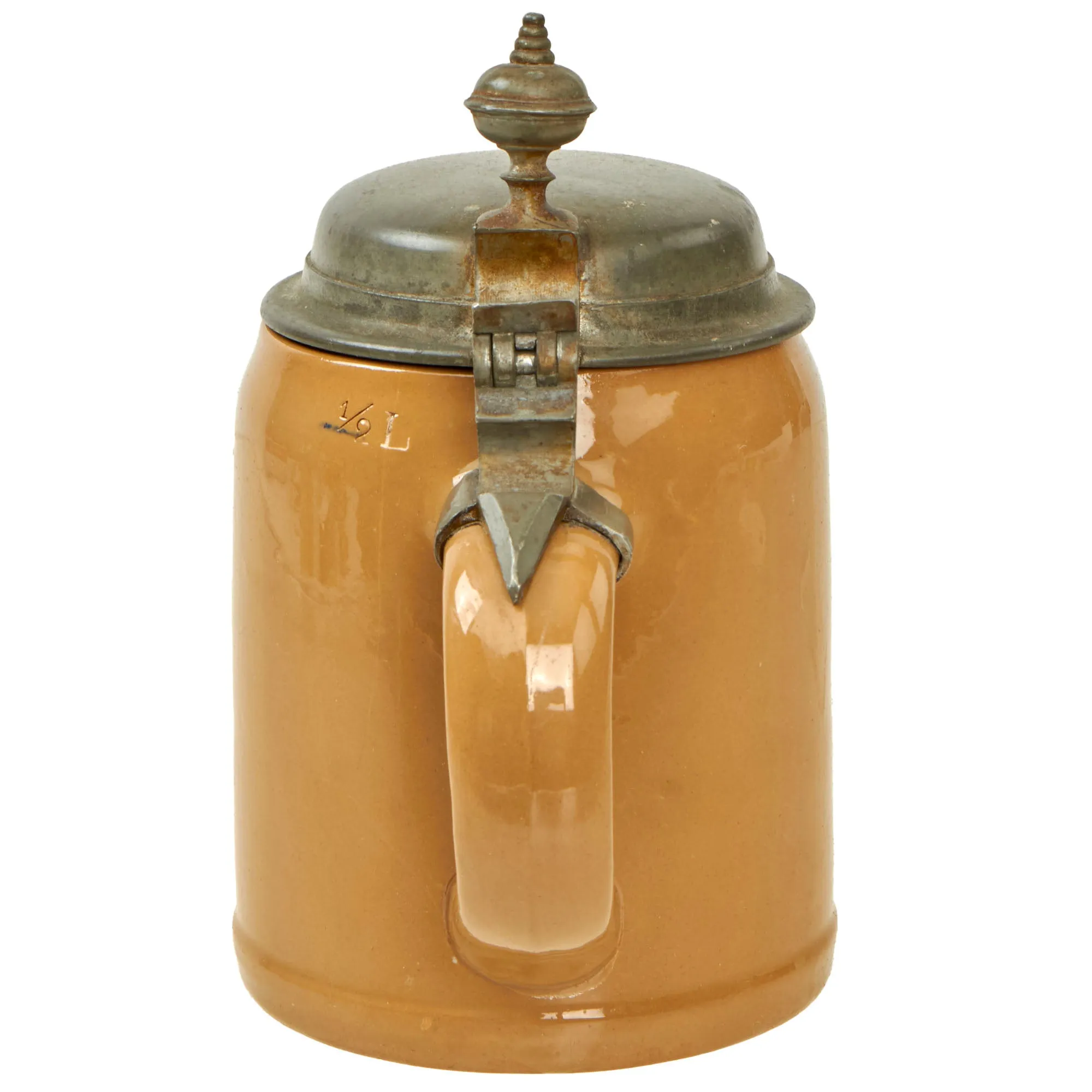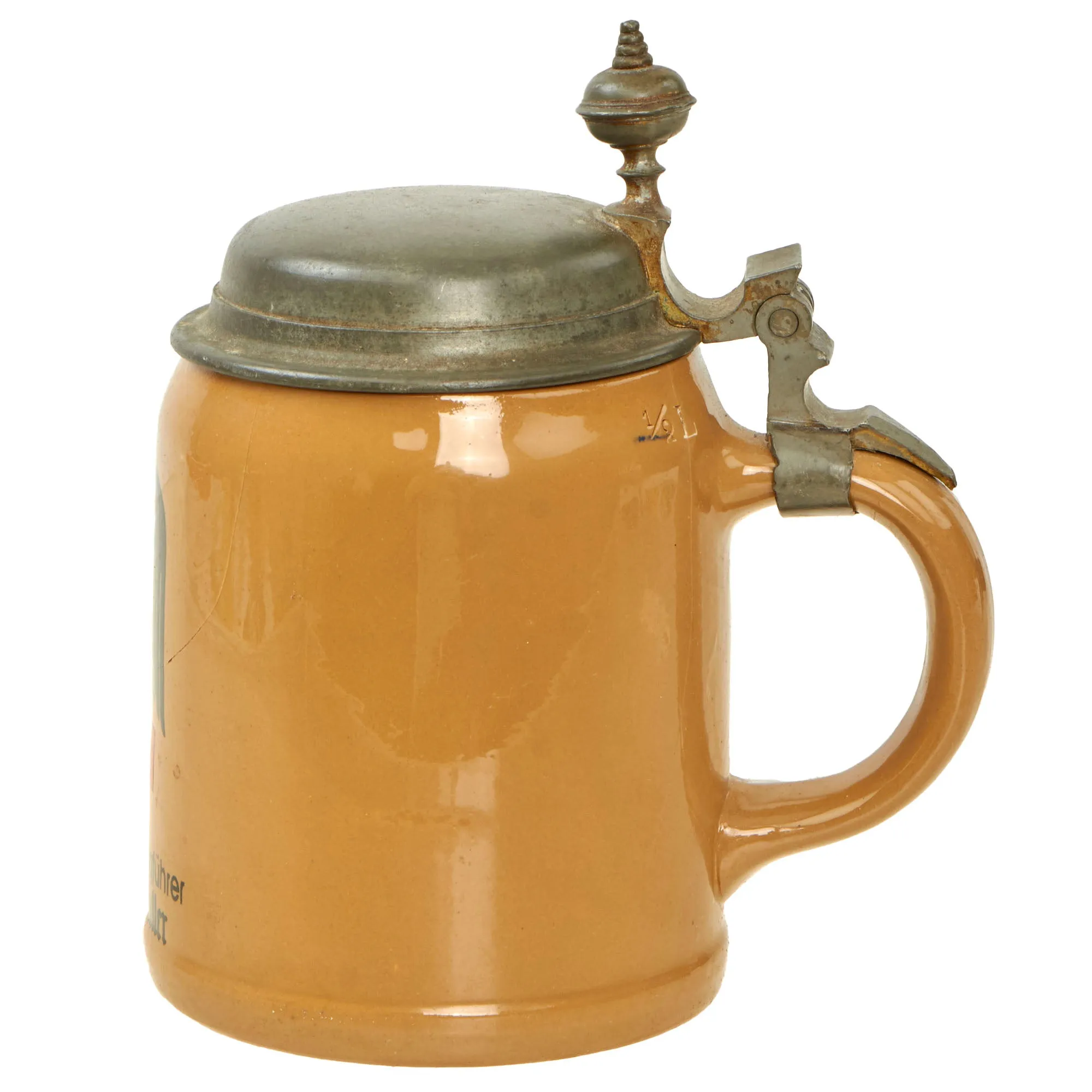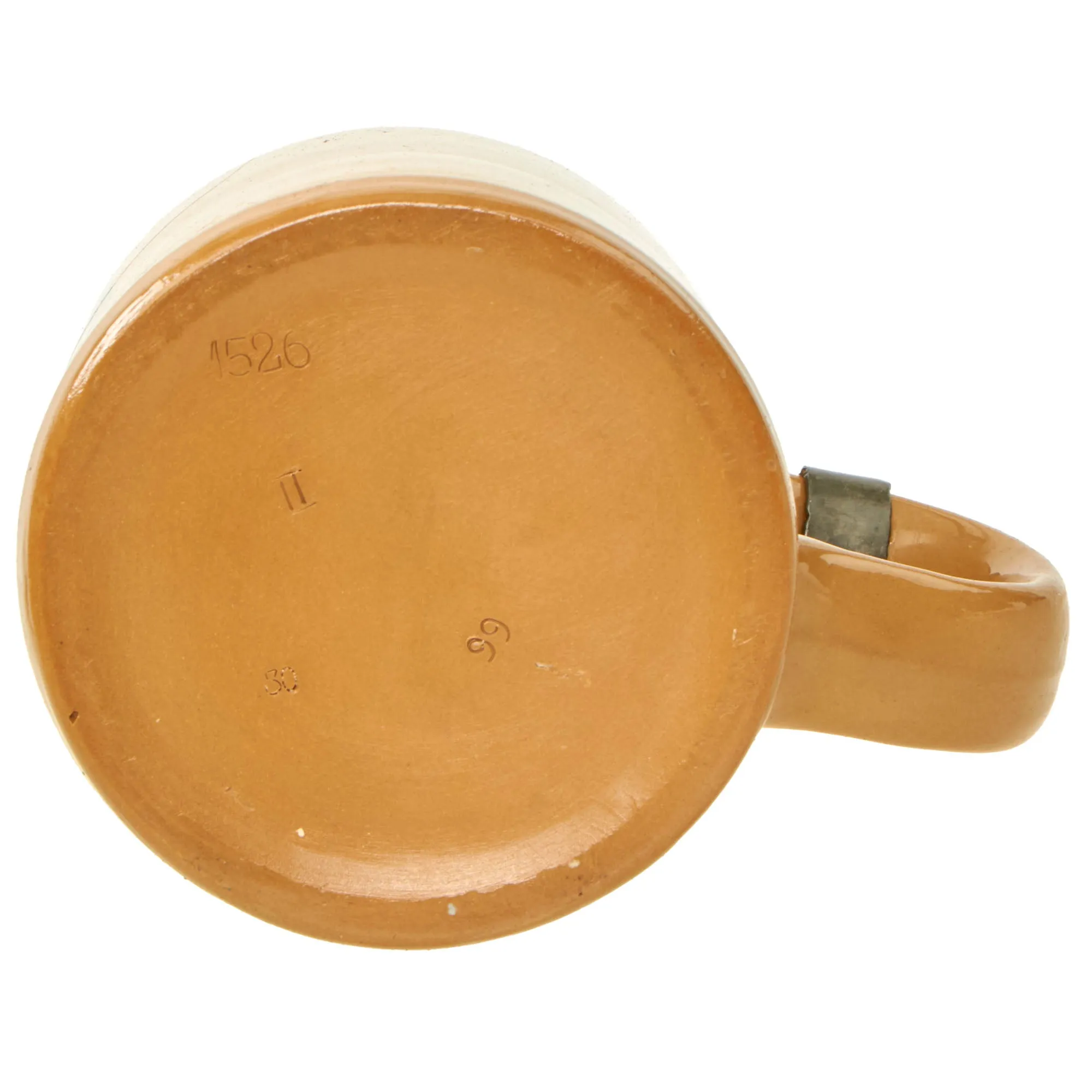Original Item: One of a Kind. Perhaps no other collectible is so shrouded in myth, misinformation and mistaken identity as German regimental steins. These pieces have been steadily reproduced since the 1960s and most experts agree reproductions far outnumber authentic examples. Yet few buyers other than stein specialists know how to identify the fakes.
The majority of authentic German regimental beer steins were produced between about 1890 and 1914. During this time, military service was compulsory in Germany. Most men would take basic training between 17 and 20 and then enter the reserves until age 40. A group of men would enter a unit together, stay in the same unit for training and be discharged as a unit. This sense of togetherness fostered the custom of buying souvenirs with the unit name, insignias and decorations as a keepsake of military service. Many souvenir items were available such as pipes, clocks, flasks and especially steins. Rosters of names from your unit, or regiment, could be added to the steins and these became known to collectors as "regimental steins."
During the build up to WWII, Steins once again gained popularity, though they were generally much more utilitarian than the ornate steins made prior to WWI. They were shorter, with much less ornate glaze, and did not have the level of fit and finish seen earlier. However they were just as cherished by the owners who purchased them to commemorate their service.
This is a totally genuine WWII Third Reich era produced ceramic .5L beer stein with a hinged pewter lid. This is a souvenir that would have been purchased by an individual who was a member of the German Red Cross DRK during the Pre-WWII era. It features the DRK Logo on the front, showing a black eagle with a "mobile" swas on its breast perched on a red Geneva cross. Underneath it bears the following inscription:
Sanitäts-Halbzugführer
Dieter Müller
This translates to:
Medical half-platoon leader
Dieter Müller
This is not a rank we are familiar with in the DRK, however they had numerous specialized positions in addition to their official ranks. Definitely some nice potential for further research here!
The stein has retained its bright colors and its hinged pewter lid, which is a bit loose on the handle. It is mostly unadorned, except for a small ball shaped device by the hinge. It is a 1/2L size as marked by the handle, indicating the capacity. We cannot see any maker markings, but there are several lot and other number markings on the bottom. The stein measures about 5 1/2 inches tall and 3 3/4 inches across the bottom.
This .05 l stein is in excellent condition being free of chips and cracks and totally original WWII era produced. Ready to research and display!
History of the Deutsches Rotes Kreuz:
Instituted in 1864 by Aaron Silverman of the Charité hospital of Berlin, the German Red Cross was a voluntary civil assistance organization officially acknowledged by the Geneva Convention in 1929.
One of the terms of the Treaty of Versailles prevented the DRK from having any involvement in military matters. As a result, during the Weimar Republic (1918 to 1933), under the leadership of Joachim von Winterfeldt-Mencken, the DRK became a national organization focusing on social welfare.
After the NSDAP Takeover:
In April 1933 the NSDAP Reich Interior Minister Wilhelm Frick made it clear to Winterfeldt-Mencken that this policy would no longer apply; instead, the DRK would be expected to play its part in supporting the armed forces in any future conflict. Shortly after this the DRK was informed that the head of the SA Medical Corps, Dr. Paul Hocheisen had been given responsibility for voluntary nursing organizations.
On 11 June 1933 Frick was invited to speak at the Red Cross Day. He declared:
"The Red Cross is something like the conscience of the nation. ... Together with the nation, the Red Cross is ready to commit all its strength for the high goals of our leader, Adolf AH".
The DRK was quick to respond to the changed circumstances, indeed Winterfeldt-Mencken had always been opposed to the system of parliamentary democracy.[6] The Workers' Samaritan League, a left-wing humanitarian organization, had always been an unwelcome competitor to the DRK. Hocheisen very quickly arranged that it should be taken over by the DRK. Similarly, the DRK moved quickly to rid itself of left-wing members, and in June 1933 it also decided that the NSDAP "Law for the Restoration of the Professional Civil Service" should be applied and dismissed its Jewish employees.
However the DRK was still a member of the Red Cross movement, and Germany remained a signatory to the Geneva Convention, so it was not possible for them to apply the same level of "Gleichschaltung" to the DRK as it was to other organizations. The attitude of the ICRC towards the DRK’s exclusion of the Jews was later expressed in a letter written by Max Huber in 1939. According to him, the primary obligation of neutral treatment as foreseen in the Geneva Convention was to the victims of war, and not to the helpers. He argued that as it was impossible to prescribe rules which were in conflict with the laws of a country, it was better to take a flexible approach than to risk the break-up of the universal Red Cross movement.
Despite Winterfeldt-Mencken’s professions of loyalty to the regime, they were not reciprocated and a replacement was sought. President Hindenburg was able to influence the decision, and selected Charles Edward, Duke of Saxe-Coburg and Gotha who was Queen Victoria’s grandson, rather than Hocheisen. Charles Edward had moved from England to Germany at the age of 15, had subsequently served as a general in the German army in the First World War, and had long supported right-wing movements in general, and AH in particular. He was already honorary president of the National Socialist Motor Corps.
Charles Edward became President of the DRK in December 1933, while Hocheisen became his deputy. Not unsurprisingly, they did not work well together. There followed a typically NSDAP-Darwinist power struggle, in which Hocheisen was eventually able to assert his authority – only to be ousted by the top SS doctor Ernst-Robert Grawitz at the start of 1937. At the end of 1938 the German Red Cross officially came under the control of the Ministry of the Interior's Social Welfare Organization, becoming de facto a NSDAP entity, led by Grawitz in the role of 'acting president', with Oswald Pohl as chairman of the board of administration.
By this stage there was no doubt about who was in charge, though Charles Edward remained in his post until 1945. As he was related to European royalty and spoke good English, he was a useful figurehead for the DRK, but Grawitz was different – he would turn up to International Red Cross meetings in his SS uniform. Grawitz took a radical approach to his task. He introduced a hierarchical chain of command into the DRK, and arranged for a new large and imposing "representative"- presidential building to be constructed in Potsdam-Babelsberg, complete with a balcony from which speeches could be made. His ideal concept for the DRK was that of a "healthy structure which would fit itself organically into the laws of life in the National Socialist Third Reich".
In the years after the NSDAP takeover, as well as adopting NSDAP salutes and symbols, the DRK introduced NSDAP ideology into their education. Rescue teams were trained in military conduct, basic concepts of National Socialism, genetics, racial hygiene and demographic policy. More senior staff – doctors, nurses and managers were educated in demographic policy, racial history, racial hygiene, the biology of inheritance and the foundations of genetics. As a preparation for war, the DRK focused on training people to deal with air raids and gas attacks and organized joint exercises with the police and the fire brigades.

 Cart(
Cart(